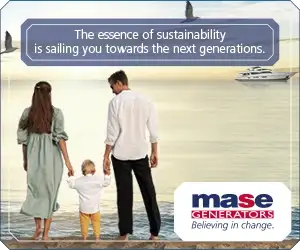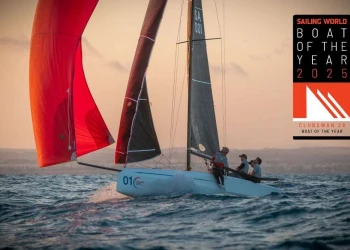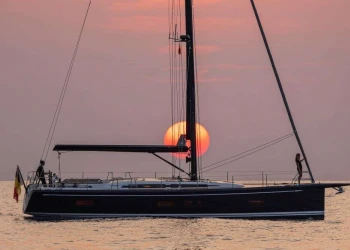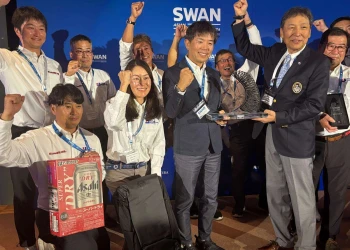
In Conversation with: Casadei, Group Chief Technical and Operations Officer
In Conversation with: Casadei, Group Chief Technical and Operations Officer
Michelangelo, your experience goes back some time and you have an impressive knowledge of the yachting industry, both in power and sailing yachts. What are the challenges ahead in achieving operational excellence?
Many of the challenges we face today in our industry are shared ones across various yards, which offers potential synergies, although market requirements and customer orientation remain specific between power and sailing.
First of all, adding features and contents to the Yachts, increasing guests' comfort, without compromising on performance and seaworthiness. Second, improve quality and customer satisfaction for Owners that are benchmarking our product (definitely high complexity and low volume) versus quality they find on products from more industrialized sectors (luxury cars, planes, technology gadgets, etc). Finally introducing more and more green and sustainable solutions both in building and while using the Yachts.
All this while also making the business sustainable in the long term, in terms of costs and new investments, which for sure requires achieving operational excellence.
Nautor Swan is an icon, the brand DNA is based on pillars of Elegance, Excellence, Reliability and Performance: how do you and your team work to strive to deliver those elements in every model? Which are the stages and tools of the industrialization process, to gain operational excellence?
To answer the challenges I mentioned, we need to combine long-held and deep knowledge, experience and craftmanship, with technological innovation on design, materials, systems and components, plus a modern process in industrialization, properly tuned to our production volumes.
Working through a stage-and-gate product development process and a lean industrialization is key, including the focus on measuring and validating results in any phase from conception to sea trials.
As far as we understand there is a process starting from the naval architecture and the more exquisite design lines of the exteriors and interiors, passing through the innovative solutions, till seaworthiness of every yacht. Can you please explain to us the touch points of how to build a Swan?
This starts from clear identification of product targets (elegance, reliability and performance among them), to be combined in the crucial "concept" development: in this phase exterior design ideas, interior design ergonomics & appeal shall be matched by a proper naval architecture: therefore architects, designers and engineers work closely in spirals, to achieve a robust concept that must be validated in style, weight, feasibility and costs. This also involves Suppliers for their specific contribution: in each technical category, proven partnerships and a modular / family scalable approach through the range, rather than "do-it-once" are improving results, and making the detailed engineering quicker and more robust. Innovation is often required at this stage to allow extra target stretch or the addition of new features. Tooling and assembly methodology are part of this, so the close connection between Engineering and Production (we recently boosted both Product Industrialization and Manufacturing Engineering Teams), before and during the first unit construction and test are crucial; as well as the respect of proper Quality control gates, culminating in extensive testing and trialing before launch and at sea.
What makes a Swan a Swan?
I would say People, first of all: people are a key asset in our industry, and this is the case with Swan.
Working with the right skills in place, proper organization and continuous communication among departments, a sense of belonging and careful selection of Partners and Suppliers, are our goals and strength.
Then we work to improve our tools and methods in order to combine long-established Company know-how, availability of information at the right time and place (here digital, virtual, lean and visual is making the difference compared to the past), attention to details and desired quality level and sustainable approach.





